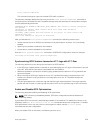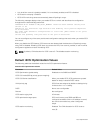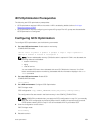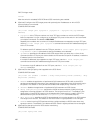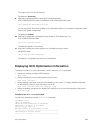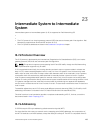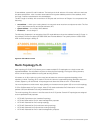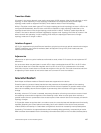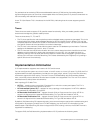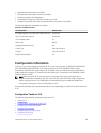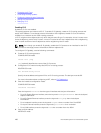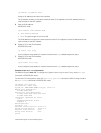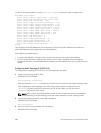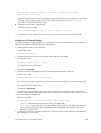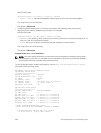Transition Mode
All routers in the area or domain must use the same type of IPv6 support, either single-topology or multi-
topology. A router operating in multi-topology mode does not recognize the ability of the single-
topology mode router to support IPv6 traffic, which leads to holes in the IPv6 topology.
While in Transition mode, both types of TLVs (single-topology and multi-topology) are sent in LSPs for all
configured IPv6 addresses, but the router continues to operate in single-topology mode (that is, the
topological restrictions of the single-topology mode remain in effect). Transition mode stops after all
routers in the area or domain have been upgraded to support multi-topology IPv6. After all routers in the
area or domain are operating in multi-topology IPv6 mode, the topological restrictions of single-
topology mode are no longer in effect.
Interface Support
MT IS-IS is supported on physical Ethernet interfaces, physical synchronous optical network technologies
(SONET) interfaces, port-channel interfaces (static and dynamic using LACP), and virtual local area
network (VLAN) interfaces.
Adjacencies
Adjacencies on point-to-point interfaces are formed as usual, where IS-IS routers do not implement MT
extensions.
If a local router does not participate in certain MTs, it does not advertise those MT IDs in its IS-IS hellos
(IIHs) and so does not include that neighbor within its LSPs. If an MT ID is not detected in the remote
side’s IIHs, the local router does not include that neighbor within its LSPs. The local router does not form
an adjacency if both routers do not have at least one common MT over the interface.
Graceful Restart
Both Helper and Restart modes of Graceful restart are supported on the device.
Graceful restart is a protocol-based mechanism that preserves the forwarding table of the restarting
router and its neighbors for a specified period to minimize the loss of packets. A graceful-restart router
does not immediately assume that a neighbor is permanently down and does not trigger a topology
change.
Normally, when an IS-IS router is restarted, temporary disruption of routing occurs due to events in both
the restarting router and the neighbors of the restarting router. When a router goes down without a
graceful restart, there is a potential to lose access to parts of the network due to the necessity of network
topology changes.
IS-IS graceful restart recognizes that in a modern router, the control plane and data plane are functionally
separate. Restarting the control plane functionality (such as the failover of the active route processor
module (RPM) to the backup in a redundant configuration) should not necessarily interrupt data packet
forwarding. This behavior is supported because the forwarding tables previously computed by an active
RPM have been downloaded into the forwarding information base (FIB) on the line cards (the data plane).
Intermediate System to Intermediate System
487



